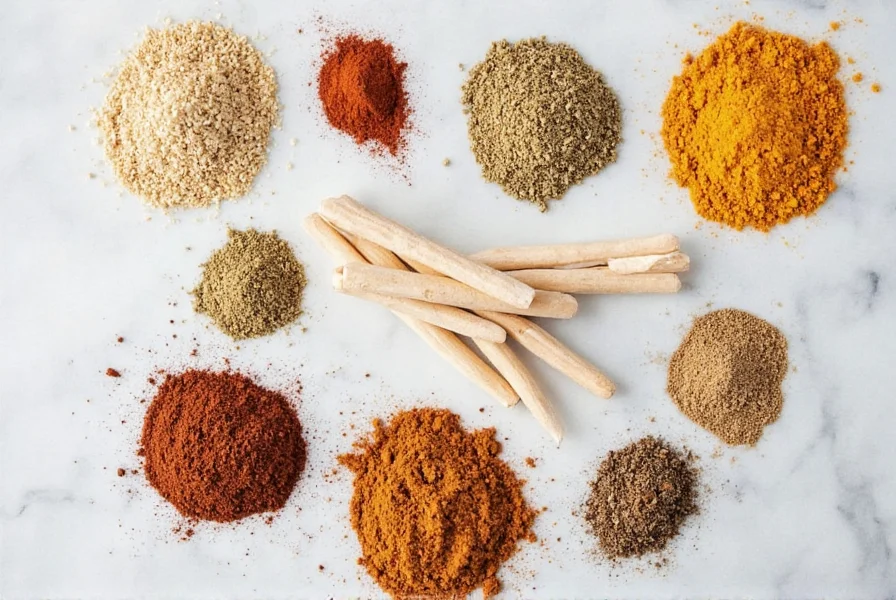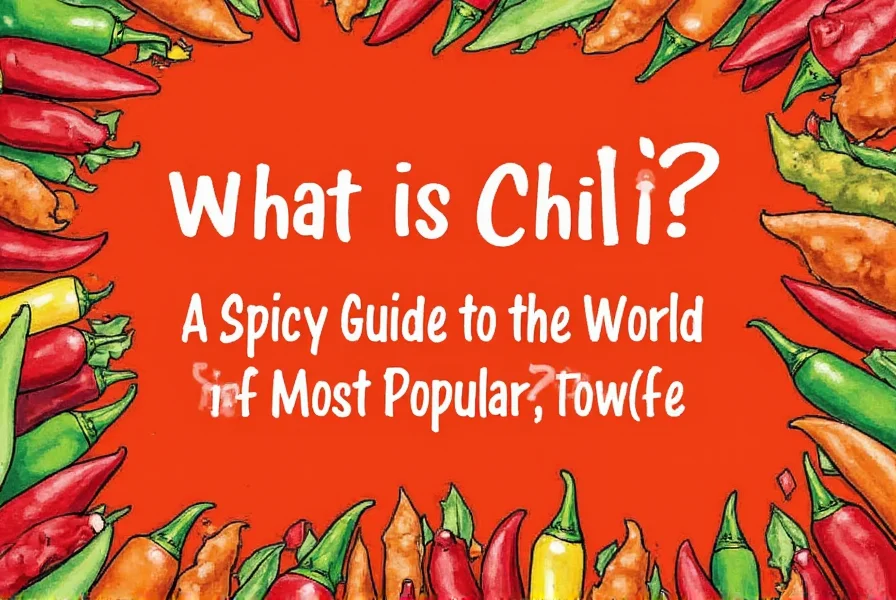Table of Contents
- Introduction to Chili Powder and Chili Pepper
- Types of Chili Peppers and Their Uses
- What Is Chili Powder?
- Chili Pepper vs. Chili Powder: A Side-by-Side Comparison
- Top 10 Practical Tips for Using Chili Powder and Chili Pepper
- Buying Guide: How to Choose the Best Chili Powder and Chili Pepper
- Frequently Asked Questions (FAQ)
- Conclusion
Introduction to Chili Powder and Chili Pepper
The fundamental difference between chili powder and chili pepper is that chili pepper refers to the whole dried or fresh fruit (like jalapeños or habaneros), while chili powder is a seasoning blend made from ground dried chili peppers mixed with spices such as cumin, garlic powder, and oregano. Understanding this distinction is essential for achieving the right flavor and heat in your dishes.
Types of Chili Peppers and Their Uses
| Chili Pepper | Heat Level | Flavor Profile | Best For |
|---|---|---|---|
| jalapeño | Mild to Medium | Grassy, slightly sweet | Guacamole, salsa, stuffed peppers |
| habanero | Very Hot | Smoky, fruity, floral | Hot sauces, Caribbean dishes |
| ancho | Mild to Medium | Earthy, smoky, sweet | Stews, mole, enchiladas |
| chipotle | Medium to Hot | Smoky, tangy | Barbecue, sauces, tacos |
| serrano | Medium to Hot | Pungent, sharp | Salsa, stir-fries, pickling |
What Is Chili Powder?
Chili powder is a pre-mixed seasoning blend made from ground dried chili peppers combined with additional spices like cumin, garlic powder, and oregano. Unlike whole chili peppers, it offers consistent flavor and heat, making it ideal for quick cooking without needing to grind peppers yourself. It's commonly used in Mexican and Southwestern cuisines for dishes like chili con carne, tacos, and fajitas.

Chili Pepper vs. Chili Powder: A Side-by-Side Comparison
| Feature | Chili Pepper | Chili Powder |
|---|---|---|
| Source | Whole dried or fresh chili fruit | Ground dried chili peppers plus other spices |
| Heat Level | Varies by variety | Depends on the blend and the type of pepper used |
| Flavor | More complex, natural, and vibrant | Concentrated, often more uniform |
| Usage | Raw, roasted, grilled, or cooked | Used in recipes as a seasoning |
| Preparation Time | Requires cutting, seeding, etc. | Ready to use immediately |
| Storage | Dried peppers last longer; fresh ones need refrigeration | Long shelf life when stored properly |

Top 10 Practical Tips for Using Chili Powder and Chili Pepper
Here are some useful tips to help you get the most out of your chili powder and chili peppers:
- Start Small: Whether you're using chili powder or fresh peppers, it's always better to start with a little and add more as needed. You can always increase the heat, but you can't take it back once it's too much.
- Use Fresh Peppers for Maximum Flavor: If you're making something like salsa or a sauce, fresh chili peppers will give you a more vibrant and complex flavor than powdered versions.
- Store Chili Powder Properly: To keep its potency, store chili powder in an airtight container away from direct sunlight and moisture.
- Try Different Varieties: Don’t be afraid to experiment with different types of chili peppers to find your favorite heat and flavor profile.
- Make Your Own Chili Powder: If you’re feeling adventurous, mix your own chili powder using a combination of dried peppers like ancho, guajillo, and chipotle for a custom blend.
- Add Heat Gradually: When using fresh chili peppers, remove the seeds and membranes first—they contain the most heat.
- Pair with Acid or Fat: Chili’s heat can be balanced by adding a splash of lime juice or a drizzle of oil to your dish.
- Use Chili Powder for Dishes That Need Depth: Think about using chili powder in slow-cooked stews, soups, and braises where the heat can mellow and infuse the dish.
- Keep a Variety on Hand: Stock up on both fresh and dried chili peppers, as well as pre-made chili powder, so you’re always prepared for any recipe.
- Don’t Forget About Smoked Chili Powder: If you love that smoky flavor, look for smoked chili powders that add a rich, deep taste to your meals.
Buying Guide: How to Choose the Best Chili Powder and Chili Pepper
If you’re looking to buy chili powder or chili peppers, here are some factors to consider:
For Chili Peppers
- Fresh vs. Dried: Fresh chili peppers are great for salsas and garnishes, while dried peppers are ideal for grinding into powder or using in stews and sauces.
- Heat Level: Choose based on your tolerance. Habaneros are extremely hot, while jalapeños are mild.
- Flavor Profile: Some peppers are smoky (like chipotles), others are sweet (like ancho), and others are sharp and pungent (like serranos).
- Quality: Look for firm, unblemished peppers. Avoid those with soft spots or mold.
For Chili Powder
- Blend Composition: Check the label to see if it includes additional spices like cumin, garlic, or oregano. Some blends are purely chili-based, while others are more complex.
- Origin: Mexican chili powders tend to be more traditional, while others might be spicier or more aromatic.
- Organic or Non-GMO: If you prefer clean ingredients, look for organic or non-GMO certified options.
- Brand Reputation: Popular brands like Goya, Simply Organic, or La Cocina offer reliable quality and consistent heat levels.
Recommended Products:
- Goya Chili Powder – A classic choice for authentic Mexican flavors. Great for tacos, stews, and grilled meats.
- Simply Organic Chili Powder – Made with organic ingredients, this blend is perfect for health-conscious cooks.
- La Cocina Ancho Chili Powder – Offers a rich, smoky flavor ideal for mole and sauces.
- Chipotle Chili Powder – Adds a smoky, tangy kick to any dish. Ideal for barbecue and marinades.
- Jimmy’s Spices Habanero Chili Powder – For those who crave intense heat and bold flavor.
Remember, the best chili powder or chili pepper depends on your personal taste and the recipe you’re working on. Experiment with different options to find what works best for you.
Frequently Asked Questions (FAQ)
- What’s the main difference between chili powder and chili pepper?
- Chili pepper refers to the whole dried or fresh fruit (like jalapeños or habaneros), while chili powder is a seasoning blend made from ground dried chili peppers mixed with spices such as cumin, garlic powder, and oregano.
- Can I substitute chili powder for fresh chili peppers in recipes?
- Yes, but adjust carefully. As a general rule, 1 teaspoon of chili powder can replace 1-2 fresh chili peppers. Remember that chili powder provides a more uniform heat, while fresh peppers offer brighter, more complex flavors.
- How much chili powder equals one fresh chili pepper?
- Approximately 1/2 to 1 teaspoon of chili powder substitutes for one medium fresh chili pepper, depending on the pepper’s heat level and your personal spice tolerance. Always start with less and adjust to taste.
- Which is hotter: chili powder or fresh chili peppers?
- Heat depends on the specific variety used. Pure chili powder made from habaneros will be hotter than fresh jalapeños, while ancho-based powder may be milder than fresh serranos. Check the Scoville rating of your specific peppers or blend.
- How should I store chili powder to maintain freshness?
- Store chili powder in an airtight container away from direct sunlight, heat, and moisture. Properly stored, it retains potency for 6-12 months. Avoid keeping it near the stove where temperatures fluctuate.
- Can I make my own chili powder at home?
- Absolutely! Toast dried peppers like ancho, guajillo, or chipotle until fragrant, then grind them into a fine powder using a spice grinder or mortar and pestle. Customize your blend by adding cumin, garlic, or oregano as desired.
- Do I need to remove seeds from chili peppers to reduce heat?
- Yes. The seeds and white membranes contain most of the capsaicin (the compound that creates heat). Removing them significantly reduces spiciness while preserving flavor.
- What’s the difference between regular chili powder and smoked chili powder?
- Smoked chili powder (like chipotle powder) is made from peppers dried over smoke, giving it a deep, smoky flavor. Regular chili powder blends vary by region but typically contain a mix of dried peppers and warm spices without the smoky element.
- Does chili powder go bad?
- While it won’t spoil, chili powder loses potency over time. For best flavor, use within 6-12 months. If it smells weak or looks faded, it’s time to replace it.
- Are there non-spicy chili peppers?
- Yes! Bell peppers are members of the chili pepper family but contain no capsaicin, making them completely mild. Poblano peppers also offer rich flavor with relatively low heat.
Conclusion
Whether you're using chili powder or chili peppers, both are powerful tools in the kitchen. They bring heat, flavor, and character to your dishes, making them indispensable for any spice enthusiast or professional chef.
Understanding the differences between the two allows you to make informed choices in your cooking. And remember, the key to mastering chili is not just about how hot it is, but how it complements the other flavors in your dish. So go ahead—spice things up and enjoy the heat!











 浙公网安备
33010002000092号
浙公网安备
33010002000092号 浙B2-20120091-4
浙B2-20120091-4